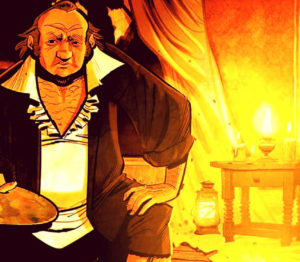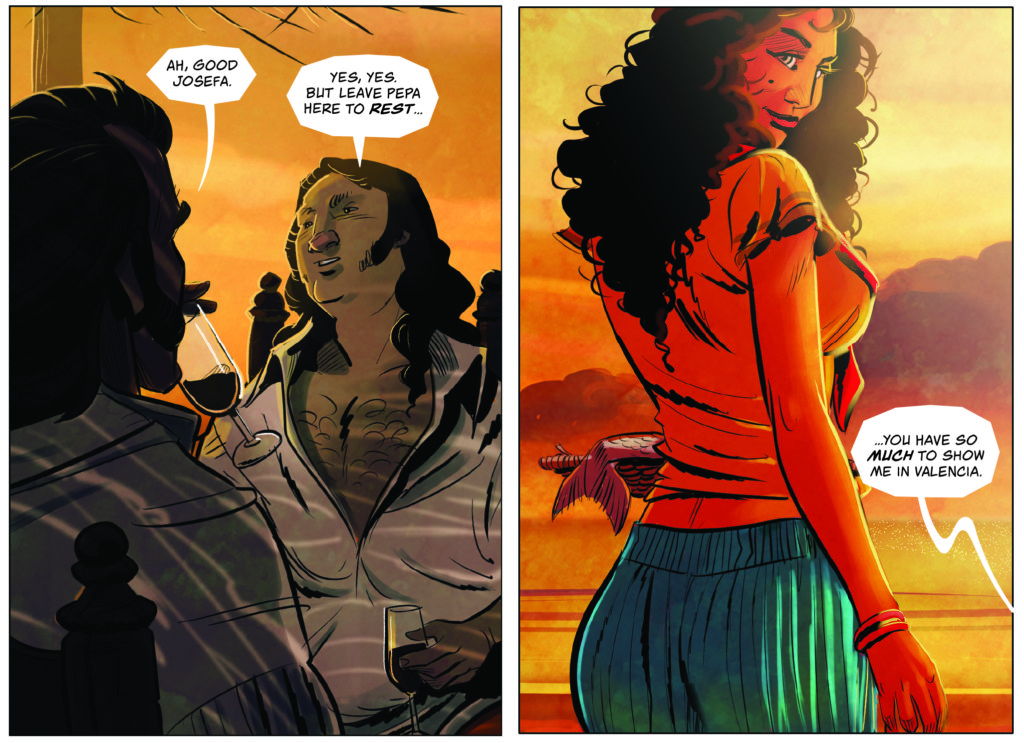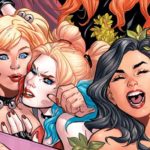Writer: El Torres
Artist: Fran Galán
Publisher: Pegasus Books
What is one to do when any of the five means of receiving sensory information is suddenly lost? It is an intriguing question because each sense enables or prevents us from engaging with the world in a particular manner.
In late 1792, the Spanish artist Francisco de Goya found himself gripped by an illness that couldn’t be diagnosed. He experienced a physical and mental breakdown, was incapacitated for months, and emerged from that period of trauma with complete loss of hearing.
Much has been written and said about how that tragedy inspired or compelled Goya to change the way he approached his art. Where there was once sweetness and light, it is presumed that there was suddenly despair and darkness. This is a fairly simplistic assumption, though, even if it offers rich fodder for writer El Torres and illustrator Fran Galán. The two collaborators on this project mine Goya’s personal history to create parallels between what he was struggling with and what he went on to create.

El Torres employs factual data that involves palace intrigues, mysterious lovers, and colorful anecdotes about the artist’s life that have long been discussed and argued about. Goya lived through tumultuous times in Spain, with wars involving the French and English, tragedies at home that involved children who rarely survived childhood, and his increasing inability to connect with anyone after his loss of hearing. All of this creates much potential for drama.
There are a number of reasons why Goya’s work — especially what art historians refer to as his Black Paintings — has been compelling for as long as it has, starting with the fact that so much of it lends itself to interpretation in any form. His undeniable influence on movements that followed, such as Impressionism, and the rise of schools of psychology that unlocked further layers of meaning, has meant that successive generations of art lovers have taken away something different from his masterpieces.

What El Torres and Fran Galán do is try to give us insights into what they believe was the horror in his mind that merely found expression on canvas. It is all speculative, but also intriguing because this is material handled by two masters of their domain.

It is only Goya’s final years that come under scrutiny here, but people and events from across his long life are never too far away. It isn’t a gloomy tale, because even when the artist’s visions seem terrifying, they never lose their ability to make a critical social commentary. It also helps draw attention to the startling fact that his darkest work arguably triggers some kind of catharsis, giving it the kind of universality that separates the ephemeral from great art. There may be monsters here, but they are present for a reason, and spending time with them inevitably teaches us something about ourselves.
There is a certain kind of poetic justice in seeing Goya’s life in panels, given that he helped tell stories using successive images. By that definition, he could well be described as the godfather of the comic art form.


![[PODCAST] THE COMICS AGENDA: IT’S THE END OF THE WORLD AS WE KNOW IT](https://geekd-out.com/wp-content/uploads/2017/11/comics-agenda-2-150x150.jpg)
